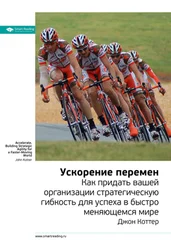M. Huberman, and C. Minns, «The times they are not changing»: days and hours of work in Old and New Worlds, 1870-2000‘, Explorations in Economics History, Vol. 44 (200710), 538-67.
Без пересчета в часы это утверждение малоинформативно. Уже давно есть люди, работающие по схеме «сутки через двое», но в часах это не меньше, чем обычная рабочая неделя.
W. Scheidel, «The Great Leveler: violence and the history of inequality from the Stone Age to the twenty-first century», Princeton: Princeton University Press, 2018.
R. Chetty, M. Stepner, S. Abraham, S. Lin, B. Scuderi, N. Turner, A. Bergeron, D. Cutler, «The association between income and life expectancy in the US», Journal of American Medical Association, 2016, Vol. 315 (20160426), 1750-66.
H. Markus, and P. Nunus, «Possible Selves», American Psychologist, 1986, Vol. 4 (9), 954-69.
J. Panksepp, «Affective Neuroscience: the foundations of human and animal emotions», New York: Oxford University Press, 1998.
D. Cable, «Alive at Work: the neuroscience of helping your people love what they do», Boston: Harvard Business Review Press, 2018.
Тип исследования, при котором проводится длительное и повторяющееся изучение группы населения или популяции организмов. Другое название этого подхода – исследование методом когорт. – Прим. перев .
G. Vaillant, «Triumph of Experience», Boston: Harvard University Press, 2012.
Высказывание Гарри Каспарова цитируется по: https://www.verdict.co.uk/garry-kasparov-humans-technology/«Garry Kasparov: We need better humans, not less technology», Verdict, Robert Scammell, 19 February 2019.
K. Thomas, «Age and Authority in Early Modern England», London: British Academy, 1976.
P. Zweifel, S. Felder, and M. Meiers, «Aging of population and health care expenditure: a red herring?», Health Economics, 1999, Vol. 8 (6) 485-96.
M. E. Levine, and E. M. Crimmins «Is 60 the new 50?: examining changes in biological age over the past two decades», Demography, 2018, 55, 2, 387-402.
J. B. Shoven, G. S. Goda «Adjusting government policies for age inflation», National Bureau of Economic Research (NBER), Working Paper, 14231, 2008.
J. Beard, and D. Bloom «Towards a comprehensive public health response to population aging», The Lancet, 2015; 385, 658-61.
B. Levy, et al, «Longevity increased by positive self-perceptions of aging», Journal of Personality and Social Psychology, 2002; Vol. 83, 2, 261-70.
См. https://www.aging-better.org.uk/sites/default/files/2018-11/ELSAnalysis.pdf.
P. Thane, «Old Age in English History», Oxford: Oxford University Press, 2011.
См. https://www.youtube.com/watch?reload=9&v=lYdNjrUs4NM.
T. O’Donoghue and M. Rabin, «Doing it now or later», American Economic Review, Vol. 89, 1 March 1999, 103-24.
Ставка дисконтирования является одним из основных понятий в науке о финансах. Если то, что вы можете купить сегодня за $100, через год будет стоить $110, то ставка дисконтирования (в вашей стране) составляет 10 %. Если вы дисконтируете $110 на 1 %, вы получаете $100. Оба эти расчета эквивалентны друг другу. Чем ниже ставка дисконтирования, тем больше требуется от вас терпения (в финансовом аспекте). При ставке дисконтирования в 0 % сегодняшние $100 эквивалентны $100 через год – иными словами, вы рассматриваете ситуацию с высоты птичьего полета.
C. Mogilner, H. E. Hershfield, J. Aaker, «Rethinking time: implications for well-being», Consumer Psychology Review, 2018, Vol. 1, Issue 1, 41-53.
D. Blanchflower, and A. Oswald, «Is well-being u-shaped over the life cycle?», Social Science and Medicine, 2008, Vol. 66 (8), 1733-49; see also J. Rauch, The Happiness Curve, New York: St Martin’s Press, 2018.
J. Etkin, and C. Mogilner, «Does variety among activities increase happiness?», Journal of Consumer Research, 2016, 43 (2), 210-29.
S. Mullainathan, and E. Shafir «Scarcity», London: Penguin, 2014.
D. Kamerade, S. Wang, B. Burchell, S. Balderson, and A. Coutts, «A shorter working week for everyone: how much paid work is needed for mental health and well-being?», Social Science and Medicine, 2019, in press 11253.
M. Aguiar, and E. Hurst, «The increase in leisure inequality», NBER Working Paper, 13837, 2008.
H. E. Hershfield, C. Mogilner, and U. Barnea, «People who choose time over money are happier», Social Psychological and Personality Science, 2016, Vol. 7 (7), 607-706.
См. https://www.nytimes.com/2016/09/11/opinion/sunday/what-should-you-choose-time-or-money.html.
McKinsey Global Institute, «Jobs lost, jobs gained: workforce transitions in a time of automation», December 2017.
См. https://www.nytimes.com/2013/06/14/opinion/krugman-sympathy-for-the-luddites.html.
Исторический анализ того, как технологии на протяжении всей истории человечества влияли на общество, рабочие места и трудовые отношения содержится, например, в работе C. Frey, The Technology Trap: capital, labor, and power in the age of automation, Princeton: Princeton University Press, 2019
См. https://www.bls.gov/news.release/archives/jolts_03152019.htm.
См. https://www.bloomberg.com/news/articles/2018-08-01/how-a-trucking-shortage-is-fueling-u-s-inflation-quicktake.
McKinsey Digital. Chui, M.. Manyika, J. and Miremadi, M. «Where machines could replace humans – and where they can’t (yet)» July 2016.
Исследовательский центр Пью (Pew Research Center) – социологический научный центр, находящийся в Вашингтоне; он анализирует и публикует информацию о социальных проблемах, общественном мнении и демографических тенденциях, формирующихся в США и во всем мире.
Читать дальше
Конец ознакомительного отрывка
Купить книгу
![Эндрю Скотт Новое долголетие [На чем будет строиться благополучие людей в меняющемся мире] обложка книги](/books/390666/endryu-skott-novoe-dolgoletie-na-chem-budet-stroit-cover.webp)











